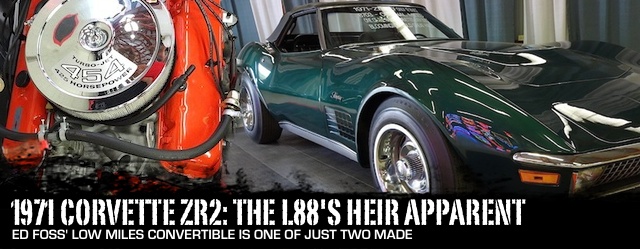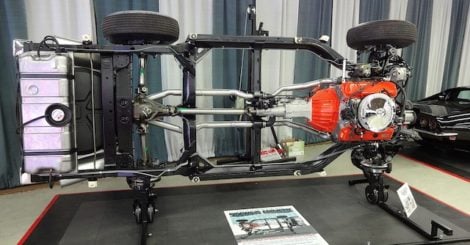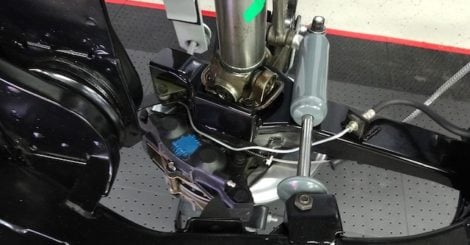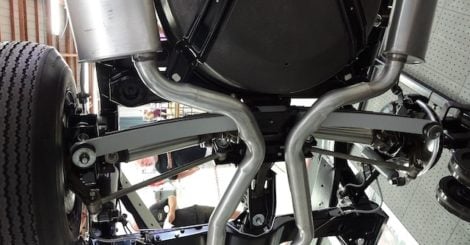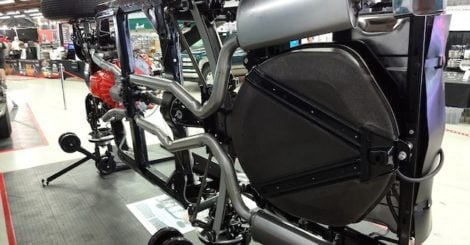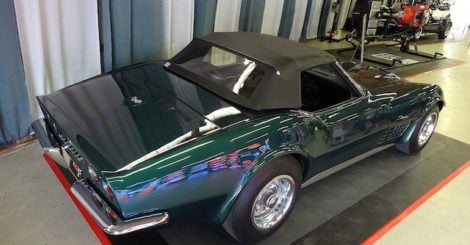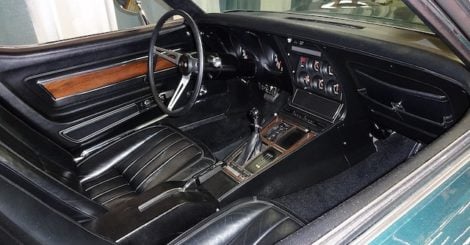Nineteen seventy-one was a tough year for fans of high performance in general and specifically General Motors. In anticipation of new emissions regulations and unleaded fuel, GM reduced the compression on all its motors. If Ford and Mopar fans were thumbing their noses at GM as they kept their high compression motors for 1971, they didn’t have much to brag about because the writing was on the wall for them too.
Even though this was the beginning of the end, GM didn’t allow performance to go out with a whimper. Not only did the Corvette line field some great street engines for 1971, but the ZR2 package with the LS6 454 showed that Chevrolet went out with guns blazing. This 1971 Corvette ZR2 was in the Chip’s Choice display at the 2012 Corvettes at Carlisle show [2], and inspired us to look deeper into the history behind this very rare option.
Owned by Ed Foss, it’s unique even among ZR2s in that it has only 8,703 miles on the clock – one of the hallmarks of Foss’ extensive Corvette collection [3] is that his cars are all low-mileage examples. If that’s not worthy for the town crier, then perhaps it being one of just two ZR2 convertibles should do the trick.
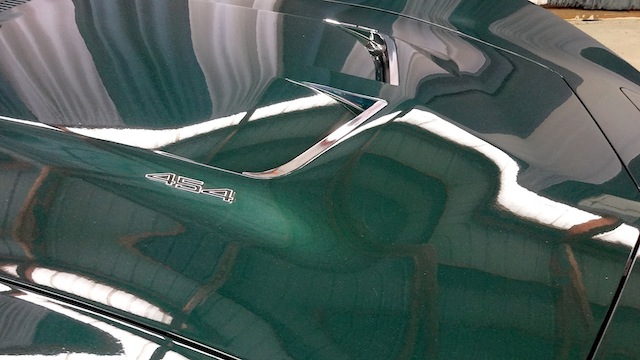 [4]
[4]Despite being inspired by the L88, the ZR2 (and its ZR1 little brother) received the conventional domed Corvette hood.
The history of the ZR2 actually goes back to the 1967-69 L88 Corvette. To your average Brand X guy, the L88 was a 13.3 quarter-mile stormer whose potential was fulfilled with a set of headers to release 560 or so horsepower. On paper it was rated at 430 horsepower – five less than the L71 427/435 – to discourage bravado-inclined customers from buying a Corvette that wasn’t quite streetable.
Corvette folks, however, know Chevrolet developed the L88 to race the likes of 12 Hours of Sebring, 20 Hours of Daytona, and similar tracks overseas. It’s this over-the-top persona with a successful racing record that has put the L88 Corvette at the top of the totem pole, with only the mighty aluminum ZL1 proclaiming greater status. With only 20 built for 1967, 80 in 1968, and 116 in 1969, they’re also among the rarest Corvettes.
End of an Era
But a funny thing happened as 1970 dawned upon Detroit – there was no ultra-horsepower Corvette to be found. The top motor ended up being the LS5 454, rated at 390 horsepower. The reason for this was the anticipation for the LS7 454/465, which ended up not reaching production status. However, the debut of the LT1 350/370 was big news, and it likely is the best of the small blocks ever installed in a Corvette during the supercar era. With 380 pound-feet of torque at 4,000 RPM, mechanical lifters, 11.0:1 compression ratio, and a four-barrel Holley carburetor, it was a solid low-14 second car that inspired taking the curves like no Corvette before it, and if you were truly serious about the latter, the road racing package with the RPO ZR1 would do the trick.
The ZR1 included the LT1 motor along with L88-inspired chassis refinements:
- M22 “Rock Crusher” close-ratio four-speed
- J56 heavy duty power brakes with dual-pin front calipers and semi-metallic brake pads
- Transistorized ignition
- Special aluminum radiator with expansion tank
- F41 suspension package consisting of 89 pound/inch front springs and 121 pound/inch rear springs, heavy-duty shock absorbers, and 3/4-inch front stabilizer bar and heavy-duty rear spindle struts
The heater was deleted when the ZR1 package was ordered, and power windows and steering, alarm system, rear window defroster, and optional trim items like deluxe wheelcovers were not compatible with the ZR1 package. At $969 a pop, only 25 people were serious enough to order this package and go road racing.
Lowered Expectations (and Compression)
Nineteen seventy-one was the year that GM fans were afraid of. The Chevelle SS 396 was down 50 horsepower from 1970. The standard Corvette’s 350 was down 30, while the LT1 was down 40. And, in an ironic twist, an ultra-high performance 454 finally made it between the Corvette’s wheel wells after the stillborn LS7. Designated LS6, this 425-horsepower 9.0:1 compression powerhouse was heir apparent to the LS7 that never saw the light of day. The key to the LS6 were open-chamber square-port aluminum heads that were the same as the “second design” 1969 L88 heads with revised exhaust ports and a recontoured intake port floor.
Other specifications for the LS6 included four-bolt mains, aluminum intake with Holley carburetor (the LS5 had cast iron with a Rochester), solid-lifter cam, forged pistons, and dual-disc clutch. Unlike other GM offerings for 1971, the LS6 required Premium fuel. This wasn’t just a low-compression version of the 1970 LS6 that appeared on the Chevelle SS 454 but, rather, a step forward that happened to be saddled by GM’s 1971 edict. Road tests of the day showed easy 13.8 quarter mile times, which was competitive with the L71 427 from a few years before. Imagine if it had high compression!
The interior was typical Corvette except for the lack of radio and heater.
Priced Out of the Market
Alas, the LS6 was an expensive option for the Corvette – $1,221. That was $738 more than the LT1 350, and a hefty $926 more than the LS5 454. Combine that with a shrinking performance market and the negative perception of GM’s move to low compression and it’s no wonder only 188 buyers ponied up their hard-earned pay for the LS6. With a base price starting at $5,259, an LS6 was Cadillac DeVille money. It could creep into Eldorado money with the ZR2 package.
Combining the chassis upgrades from the L88 and updates from the ZR1, the ZR2 was simply the big block version of the ZR1. This was for the serious road racer who wanted the most powerful car possible with the chassis tweaks required for competitive racing. The LS6 included in the ZR2 package was stock but could only be paired with the M22 four-speed, unlike the regular LS6 which was available with an automatic. At $1,747, it’s no wonder that only 12 souls were serious and well-heeled enough to have ordered one. For 1972, the LS6 was gone, as was the ZR2 package. The LT1 and ZR1 package soldiered on for one more year, and then the glory days of high performance were over for a generation.
 [12]
[12]The 1971 LS6 was rated at 425 gross and 325 net horsepower. Compression was down, but performance was not out.
